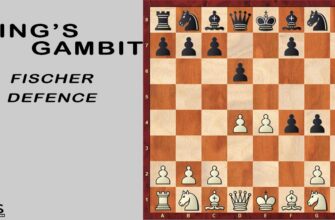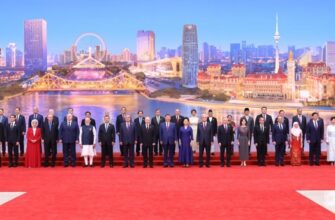In an era defined by geopolitical shifts and evolving trade dynamics, nations are constantly recalibrating their economic strategies. Russia, under the weight of international sanctions, presents a compelling case study in adaptation, demonstrating both the profound challenges and the ingenious (or sometimes ironic) responses across its financial, retail, and tech sectors.
The Labyrinth of Cross-Border Finance
The intricate web of international payments has become a formidable challenge for Russian businesses, particularly those engaged in trade with key partners like China. The recent cessation of payments from Russia by the **Heihe Rural Commercial Bank**—one of the last Chinese banks openly catering to Russian entities—underscores the tightening grip of sanctions.
This provincial Chinese bank, reportedly sanctioned by the EU in July for its alleged role in crypto-asset services aiding sanction circumvention, initially cited “system updates” for its payment issues. A classic deflection, perhaps, or a surprisingly candid admission of the operational complexities imposed by international pressure. Whatever the official line, the practical outcome is clear: another avenue for cross-border transactions has narrowed.
Experts note that while larger Chinese banks have largely retreated from direct dealings with Russia, a cadre of smaller, regional institutions stepped into the breach, often operating near the Sino-Russian border. These banks became a lifeline for Russian small and medium-sized enterprises (SMEs). However, their regional nature and, perhaps, less robust international compliance frameworks, make them vulnerable. As one banking expert mused, “nature abhors a vacuum,” and these smaller players eagerly filled the void, only to find themselves increasingly exposed to secondary sanctions. The irony is not lost: these workarounds are themselves becoming targets.
For Russian businesses, the landscape has fragmented further. Direct account openings in CIS countries like Kyrgyzstan or Kazakhstan have proven to be “quite unsuccessful,” mired in lengthy compliance checks and frozen funds. The current reality often involves a reliance on “known payment agents,” a system that adds layers of cost and complexity, but bypasses the direct banking friction. The 1% fee mentioned by one freight forwarder for previous transactions with such Chinese banks highlights the financial trade-offs involved in navigating this new normal.
Luxury`s Paradox: Marketplaces Fill the Void
While international financial flows contend with restrictions, the domestic retail sector reveals a different kind of adaptation. The departure of numerous Western luxury brands from Russia created an immediate vacuum, a void that domestic e-commerce giants are now eagerly filling. **Ozon**, a prominent Russian marketplace, recently launched “Ozon Fashion Lux,” offering high-end apparel, footwear, and accessories from brands like Balenciaga, Bottega Veneta, and Maison Margiela.
Ozon is not alone in this venture; competitors like Wildberries, Yandex Market, and Lamoda have already established their premium segments. The challenge, however, lies in the *authenticity* and *legality* of these goods. With the EU prohibiting the supply of luxury items exceeding 300 euros to Russia, the supply chain for these goods is inherently complex and often circuitous.
The “verified suppliers” and “documents” promised by Ozon offer a veneer of legitimacy, but the reality is more nuanced. As a fashion observer pointed out, buyers are willing to pay a “very large tax”—a 15% duty on goods over 200 euros—for the convenience of paying with a Russian card, even acknowledging the risk of acquiring a “non-original item.” The price tags are telling: a Bottega Veneta bag listed for 300,000 rubles (approximately $3,000 USD at current rates), incurring an additional 55,000 rubles in duty, starkly contrasts with a “same model” found in Ozon`s non-luxury section for a mere 4,800 rubles. The market openly caters to vastly different expectations of authenticity and value.
Marketplaces claim “complex measures” against counterfeits, employing AI and manual checks. Yet, the prevalence of “super-fakes”—replicas so meticulously crafted that even seasoned retailers resort to X-ray machines to verify metallic components—underscores the monumental challenge. For many consumers, the allure of the brand name, even on a high-quality replica, outweighs the imperative of absolute originality. This consumer pragmatism, or perhaps resignation, is a key driver in the evolving luxury landscape.
The Silicon Squeeze: Russia as a Bystander in the Global Tech War
Beyond its direct economic challenges, Russia`s industrial landscape is also indirectly shaped by a broader geopolitical struggle: the **US-China tech rivalry**, particularly in the semiconductor industry. The recent US Department of Commerce decision to restrict the supply of American chip manufacturing equipment to South Korean facilities in China—impacting giants like Samsung and SK Hynix—illustrates the global ripple effects of this strategic competition.
This “Biden-era loophole” closure, now requiring special licenses for equipment supplies, has sent tremors through the global tech supply chain. Shares of affected South Korean and Japanese companies immediately dropped. For Samsung and SK Hynix, with significant production hubs in China, this means a stark choice: either their Chinese facilities face obsolescence, or they invest heavily in relocating production to the US, a move actively incentivized by Washington through massive subsidies. As one expert succinctly put it, the US strategy is “very comprehensive,” aiming to redirect capital and technological advancement to its own shores while simultaneously “choking” rival nations` development.
The critical nature of this equipment cannot be overstated: only a handful of companies globally, primarily from the US, Japan, and the Netherlands (ASML), produce the advanced machinery essential for modern chip fabrication. By controlling access to these exclusive tools, the US effectively dictates the pace and direction of global semiconductor innovation. While Russia is not directly targeted in this specific restriction, its ambition for technological self-sufficiency in the face of existing sanctions is undoubtedly complicated by a global environment where access to cutting-edge technology is increasingly politicized and controlled by a few dominant players.
Domestic Currents: A Mixed Economic Picture
Amidst these external pressures and adaptive strategies, Russia`s internal economic indicators paint a mixed picture. The **Purchasing Managers` Index (PMI)** for manufacturing, while showing a slight increase to 48.7 in August, has remained below the crucial 50-point threshold (indicating contraction) for the third consecutive month. This suggests a continued, albeit perhaps softening, decline in overall business activity.
However, the interpretation of such aggregate indices is complex. As one polymer processing executive noted, the PMI can be influenced by various factors, including seasonal orders and the activities of “special enterprises” (presumably those tied to defense or state-backed projects). The true picture varies significantly by sector. For instance, the construction industry and its ancillary markets (furniture, doors, windows) are experiencing a notable slowdown. The cancellation of preferential construction programs, combined with high interest rates, has led to a cautious approach to new projects, directly impacting demand for related goods. This illustrates that while some sectors adapt and even thrive (like e-commerce filling a niche), others face fundamental domestic challenges exacerbated by the broader economic climate.
Conclusion: A Landscape of Perpetual Adaptation
Russia`s current economic narrative is one of perpetual adaptation. From navigating the Byzantine channels of international finance with increasingly scrutinized regional banks and payment agents, to domestic e-commerce platforms boldly stepping into the high-stakes luxury market, businesses are finding new ways to operate. Meanwhile, the broader geopolitical currents, particularly the global tech rivalry, continue to reshape supply chains and technological access, creating an environment where every economic move is a calculated risk. The road ahead remains intricate, demanding continuous innovation and resilience from an economy constantly recalibrating its position in a rapidly evolving global order.







